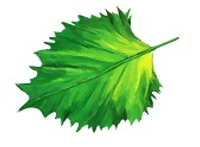Echeveria 'Pearl of Nurnberg': A Stunning Succulent
Echeveria 'Pearl of Nurnberg' is a captivating succulent plant admired for its elegant rosette shape and beautiful coloration. This article explores the characteristics, care tips, and propagation methods for this popular Echeveria variety.
Characteristics
Echeveria 'Pearl of Nurnberg' showcases a distinctive appearance:
- Rosette Form: It forms a tight rosette of fleshy, spoon-shaped leaves that range in color from pale silvery-gray to soft pastel lilac.
- Coloration: The leaves exhibit a powdery coating (pruinose) that gives them a dusty appearance, enhancing the subtle shades of purple and pink.
- Size: Mature plants typically reach a diameter of 6 to 8 inches, with individual leaves growing up to 3 inches long.
- Flowering: In late spring to early summer, mature plants produce tall stems topped with coral-pink, bell-shaped flowers, adding to its ornamental appeal.
Care Tips
To cultivate a healthy Echeveria 'Pearl of Nurnberg', follow these care guidelines:
- Light: Provide bright, indirect light for at least 6 hours a day. Protect from intense afternoon sun, especially in hot climates.
- Temperature: Maintain temperatures between 65°F to 80°F (18°C to 27°C) during the day and around 50°F to 55°F (10°C to 13°C) at night.
- Watering: Water deeply but infrequently. Allow the soil to dry out completely between waterings to prevent root rot.
- Soil: Plant in well-draining soil mix specifically formulated for succulents to avoid waterlogged conditions.
- Fertilization: Feed with a balanced, diluted fertilizer during the growing season (spring and summer) to promote healthy growth.
- Potting: Use a shallow pot with drainage holes to prevent water accumulation around the roots.
Propagation
Echeveria 'Pearl of Nurnberg' can be propagated easily through leaf cuttings or offsets:
- Leaf Cuttings: Gently twist off healthy leaves and allow them to callus for a few days. Then, lay them on well-draining soil and mist occasionally until new roots and rosettes form.
- Offsets: Remove offsets (baby plants) that emerge around the base of the mother plant. Let them dry for a day or two before potting them in their own containers.
Common Issues
Watch out for these potential problems:
- Overwatering: This can lead to root rot. Always err on the side of underwatering with Echeverias.
- Pests: Keep an eye out for mealybugs, aphids, and spider mites. Treat infestations promptly with neem oil or insecticidal soap.
- Sunburn: Protect from intense, direct sunlight to avoid leaf scorch.
